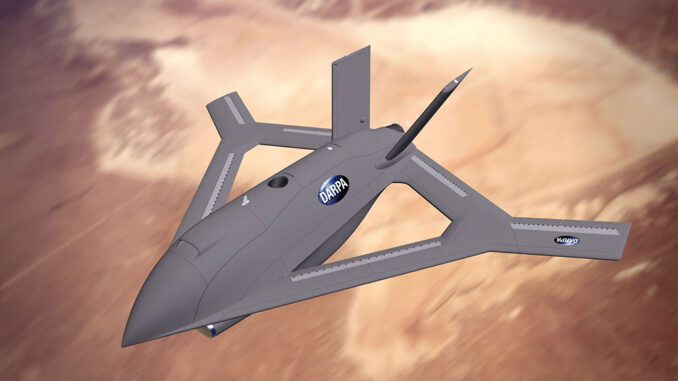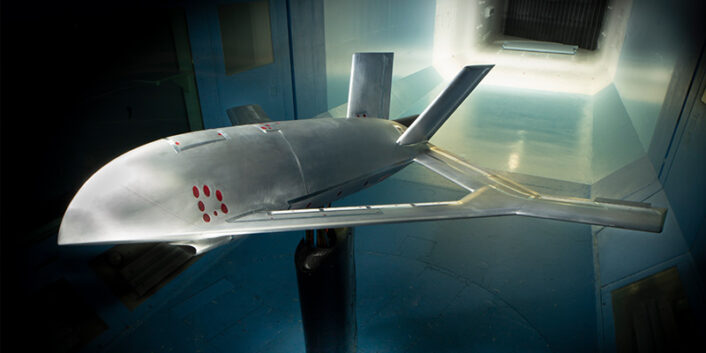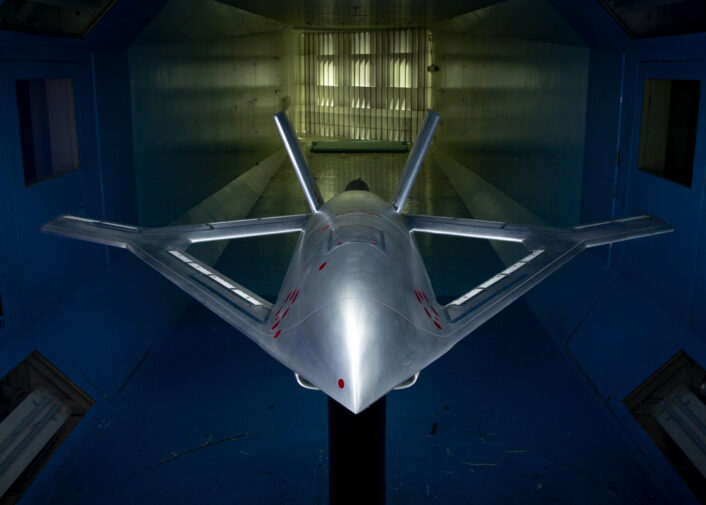
DARPA wants to develop and fly a demonstrator aircraft that does not use external mechanical flight controls. Aurora plans to fly an X-Plane in 2025.
The Defense Advanced Research Projects Agency (DARPA), that serves as the central research and development organization of the U.S. Department of Defense, is moving forward in its plan to develop and fly a demonstrator aircraft that will not make use of external mechanical flight controls.
On Jan. 17, 2023, the Agency announced the successful completion of the preliminary design phase of the Control of Revolutionary Aircraft with Novel Effectors (CRANE) program: the outcome of Phase 1 was the concept of an innovative testbed aircraft that used active flow control (AFC) to generate control forces in a wind tunnel test. According to DARPA, Phase 2 will focus on detailed design and development of flight software and controls, culminating in a critical design review of an X-plane demonstrator that can fly without traditional moving flight controls on the exterior of the wings and tail. In Phase 3, DARPA intends to fly a 7,000-pound X-plane that addresses the two primary technical hurdles of incorporation of AFC into a full-scale aircraft and reliance on it for controlled flight.
“Unique features of the demonstrator aircraft will include modular wing configurations that enable future integration of advanced technologies for flight testing either by DARPA or potential transition partners.”
For Phase 2 and optional Phase 3, DARPA selected Aurora Flight Sciences, a Boeing company that “develops and applies innovations across aircraft configurations, autonomous systems, propulsion technologies, and manufacturing processes.”
DARPA enters a new phase in creation of an aircraft with no exterior moving parts. @AuroraFlightSci will design a full-scale X-plane that relies solely on changes in air flow for in-flight maneuvers. #ActiveFlowControl #XPlane
More: https://t.co/wnD5tSbt77 pic.twitter.com/RYdYDWvPyJ— DARPA (@DARPA) January 17, 2023
“Aurora’s X-plane candidate uses active flow control (AFC) for multiple effects, including flight control at tactical speeds and performance enhancement across the flight envelope,” says the company public release issued in December 2022. “The experimental, purpose-designed aircraft is designed around an AFC system that supplies pressurized air to AFC effectors embedded in all flying surfaces. The vehicle configuration provides AFC testing for multiple wing sweeps using nozzle arrays located at the upper surface of each wing. Aurora continues to collaborate closely with its parent company, Boeing, on the design of the aircraft and its AFC system.”
“The aircraft is configured to be a modular testbed featuring replaceable outboard wings and swappable AFC effectors. The modular design allows for testing of not only Aurora’s AFC effectors but also AFC effectors of various other designs. By expanding testing capabilities beyond Aurora-designed components, the program further advances its goal to provide the confidence needed for future aircraft requirements, both military and commercial, to include AFC-enabled capabilities.”

AFC technology is being considered as a way to achieve Low Observability (LO) on future combat aircraft: by design, moving control surfaces require actuators, gaps and edges that have an impact on the all-aspect radar cross section (RCS) of the aircraft; when deflected, such control surfaces alter the overall shape of the aircraft potentially affecting its LO. For this reason, future aircraft (including the NGAD) will probably make use of a combination of airflow control and a thrust-vectoring to fly and maneuver.

"flow" - Google News
January 18, 2023 at 05:43PM
https://ift.tt/TfV4ODb
Development Of An Active Flow Control X-Plane For DARPA Progresses - The Aviationist
"flow" - Google News
https://ift.tt/ZAbrosf
https://ift.tt/X4EmzdA
Bagikan Berita Ini














0 Response to "Development Of An Active Flow Control X-Plane For DARPA Progresses - The Aviationist"
Post a Comment